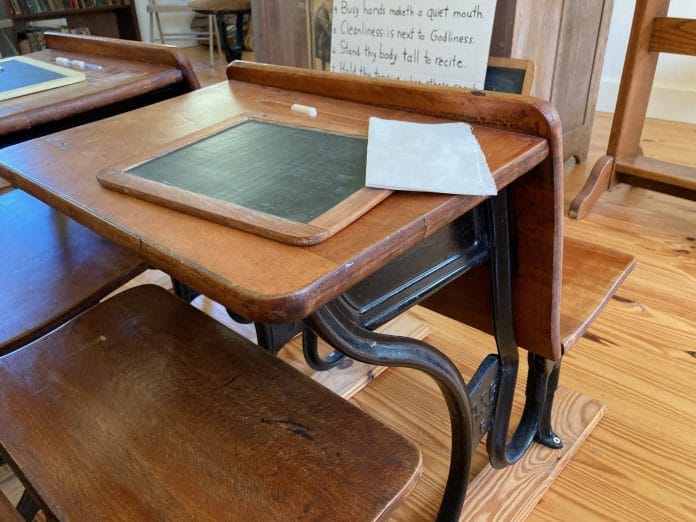The Countryman One Room Schoolhouse on Russell Street features a large blackboard on the wall behind the teacher’s desk. In schools across the country, this basic teaching tool was literally a black board or several boards together, that were painted black. White chalk was all a teacher and students needed to convey directions, practice penmanship, and to work out arithmetic problems.
In some states where slate is a natural resource, the blackboard was actually a 4’ X 6’ piece of slate. Children had individual “slates” at their desks, too. They usually had a rag at their desk to wipe the slate clean after working on it. Keeping the big boards clean was a typical class chore that lucky students were tasked with. When felt erasers were used on the big blackboards, someone was chosen to take the erasers outside to clap the erasers together to release the chalk dust. Over the years, blackboards were replaced with green metal boards and now, dry erase boards are the norm. Now, no one gets to go outside to clap the erasers!
The Museums are open!
The May-Stringer: Tours Thursday, Friday & Saturday 352-799-0129
The 1885 Depot: Tours Wednesday, Friday & Saturday 352-799-4766
The Countryman One Room Schoolhouse: By appointment 352-515-3054 or 630-464-2313

